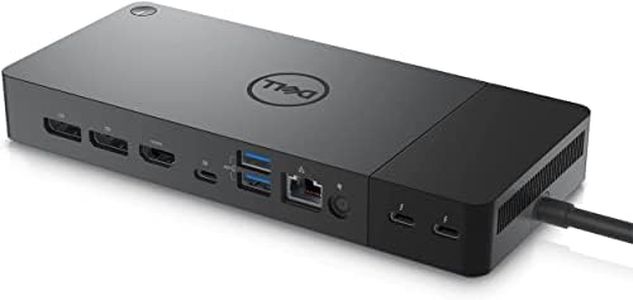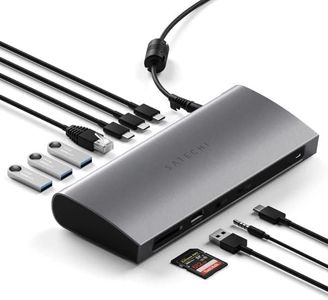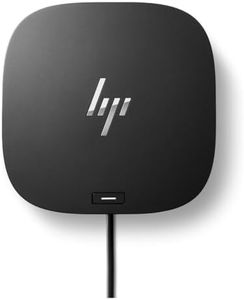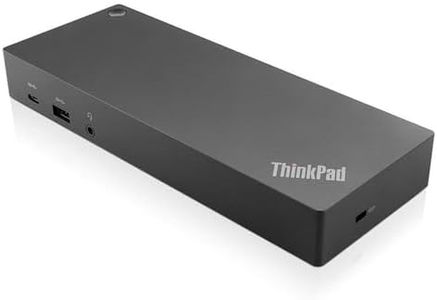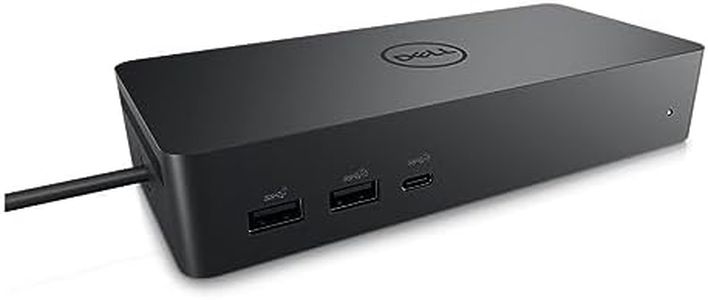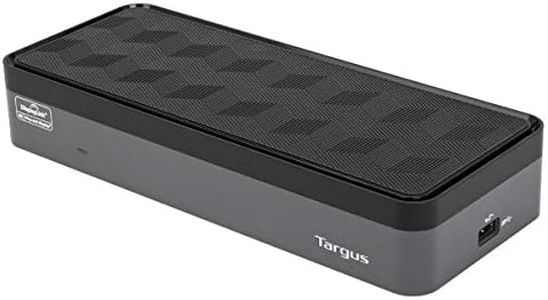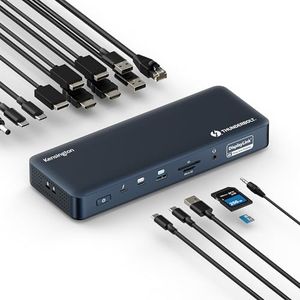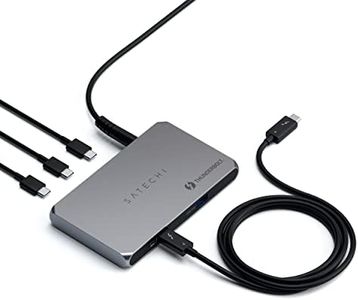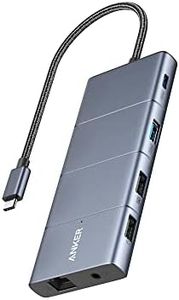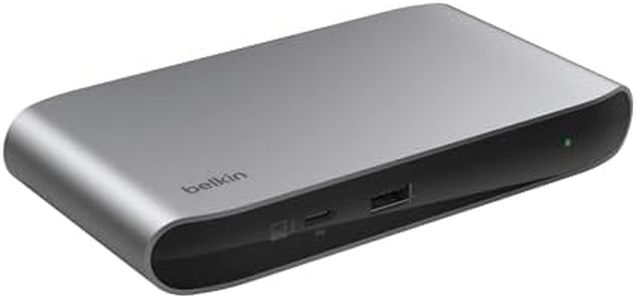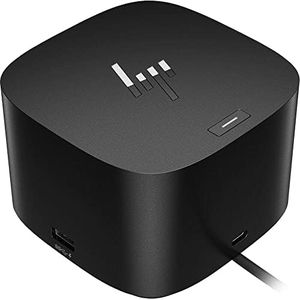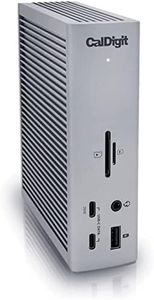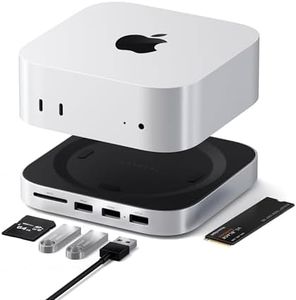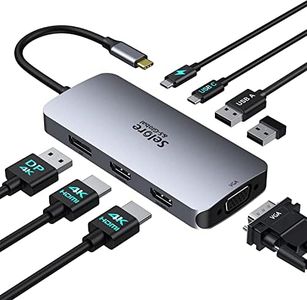We Use CookiesWe use cookies to enhance the security, performance,
functionality and for analytical and promotional activities. By continuing to browse this site you
are agreeing to our privacy policy
10 Best Docking Stations
From leading brands and best sellers available on the web.Buying Guide for the Best Docking Stations
Docking stations are valuable accessories for people who want to make their laptop or tablet work more like a desktop. By connecting a single cable, you can quickly add multiple accessories, like monitors, keyboards, mice, external drives, speakers, and more. Selecting the right docking station means understanding what devices you want to connect, what ports you need, and how you use your workspace. The best dock should reduce clutter and save you time every day.Port SelectionPort selection refers to the types and numbers of connectors available on the docking station. This includes USB ports (Type-A, Type-C), HDMI, DisplayPort, Ethernet, audio jacks, and card readers. The value here is simple: more and varied ports let you connect more devices or displays. If you have lots of older accessories, look for docks with multiple USB-A ports. For connecting modern devices and fast charging, USB-C or Thunderbolt 3/4 matter more. If you use external monitors, confirm there are enough video outputs of the right kind. Think about your current gear as well as anything you might want to add soon.
Power DeliveryPower delivery means the ability of the docking station to charge your laptop or device while it’s connected. The amount of power provided is measured in watts (W)—higher numbers can charge bigger or more power-hungry laptops. Lighter laptops are fine with 45-65W; bulkier laptops might need docks rated at 85W or more. Make sure your docking station matches or exceeds your device’s charging needs, so you don’t run out of power while working.
Video Output CapabilityThis spec refers to how many monitors you can connect, and at what maximum resolution and refresh rate. Some docks support only a single monitor, while others allow two or more, with resolutions up to 4K or higher. If you need multiple displays or want sharp text and images (such as for creative work or multitasking), ensure the dock can handle the number and resolution of monitors you plan to connect. For basic emailing and browsing, a single 1080p output is usually plenty. For coding, design, or extensive multitasking, look for dual or triple monitor 4K support.
CompatibilityCompatibility means which laptops, operating systems, and devices can work with the docking station. Some docks use standard connectors like USB-C or Thunderbolt and are widely compatible; others are designed for specific brands or models. Before buying, check that your laptop supports the docking mode and port type required. Also, if you use Windows, Mac, or Linux, verify software drivers are available. Pick a dock that matches your current system and, if possible, anything you might upgrade to in the near future.
Form Factor and BuildForm factor includes the size and shape of the docking station and whether it’s designed to sit on a desk or be portable in a bag. A larger, stationary dock gives more ports and better cable management, good for setup that stays in one spot. Small, travel-friendly docks trade some ports for portability—handy if you work at different desks or travel often. Think about how and where you’ll use the dock to decide if you need something solid-and-stationary or compact-and-portable.
Network ConnectivityMany docking stations provide wired Ethernet (LAN) ports. This is useful if you need fast or reliable Internet that Wi-Fi can’t provide—for example, when transferring large files, gaming, or video conferencing. Standard gigabit (1Gbps) Ethernet is fine for most uses, but some offer even faster speeds. If you need stable, wired internet access at your desk, make sure the dock includes an Ethernet port.
